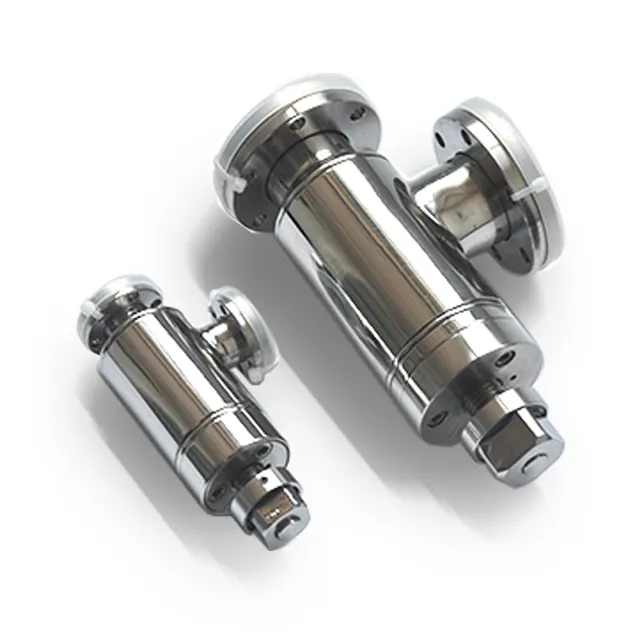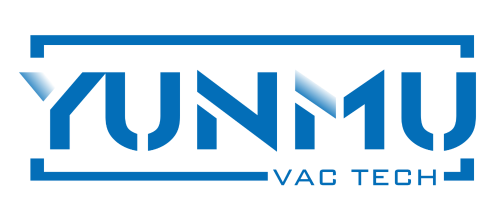العوامل الرئيسية في اختيار أنظمة فراغ مخصصة
التقييم التطبيق المتطلبات
يحتاج اختيار نظام شفط مناسب إلى معرفة متطلبات التطبيق بدقة. ابدأ بتحديد المواد أو العمليات المعنية، مع الانتباه إلى حجم الجسيمات وخصائصها نظرًا لأن هذه العوامل تؤثر على نوع ظروف الشفط التي تكون الأكثر فاعلية مع المواد المختلفة. يساعد فهم كل من مستوى الشفط المطلوب وكمية المادة التي يجب أن تتحرك عبر النظام في ضمان أداء جيد. عادةً ما تحتاج المختبرات إلى مستويات شفط أعلى مقارنة بالعديد من التطبيقات الصناعية التي تكون مستويات شفط منخفضة كافية فيها. من المهم أيضًا التحقق مما إذا كان النظام الجديد يعمل بشكل جيد مع المعدات الحالية، مما يوفّر المال عن طريق تجنب التعديلات غير الضرورية ويجعل عملية التركيب أكثر سلاسة. ضع كل هذه النقاط في الاعتبار عند اختيار حل الشفط الذي يعزز الإنتاجية مع الحفاظ على انخفاض التكاليف على المدى الطويل.
تقييم التحديات الخاصة بالقطاع
تواجه الصناعات المختلفة جميع أنواع المشاكل في أنظمتها الخاصة بالفراغ، ومعرفة هذه المشاكل تُحدث فرقاً كبيراً عند اختيار المعدات المناسبة. خذ على سبيل المثال مصانع معالجة الأغذية، حيث تواجه باستمرار مخاطر التلوث الناتج عن دخول الغبار والجسيمات إلى المنتجات. وفي الوقت نفسه، في تصنيع الأدوية، تميل المواد إلى التدهور بمرور الوقت، مما يخلق مجموعة أخرى من التحديات. فهم هذه القضايا المحددة يمكّن المهندسين من بناء أنظمة فراغ فعالة تلبي احتياجات العمل. هناك أيضًا مسألة القوانين والأنظمة البيئية التي تحدد كيفية تصميم وتشغيل هذه الأنظمة يومياً. الامتثال لهذه المعايير لا يتعلق فقط بتجنب المتاعب القانونية، بل أصبح أمراً في غاية الأهمية بشكل متزايد مع سعي الشركات إلى اعتماد عمليات أكثر صداقة للبيئة. يمكن أن تؤثر عوامل مثل درجات الحرارة القصوى أو مستويات الرطوبة العالية في بعض المنشآت على كفاءة أداء نظام الفراغ أيضاً. عندما تواجه الشركات هذه التحديات الصناعية المحددة بشكل مباشر، فإنها تصل إلى حلول فراغ أفضل أداءً والتي تتماشى مع جميع المعايير اللازمة عبر مختلف قطاعات السوق.
الاحتياجات الخاصة بالصناعة لنظم الفراغ
التصنيع ومعالجة المواد
تُعدّ أنظمة التفريغ الآن جزءًا كبيرًا من تصنيع ونقل المواد داخل المصانع، حيث تساعد في أتمتة خطوط الإنتاج مع الحفاظ على سير العمليات بسلاسة. كما أنها تُعتبر مهمة للغاية في أعمال مثل تصنيع قطع المعدن المدرفلة وتشكيل البلاستيك، حيث يلعب السعي نحو الدقة والسرعة دورًا كبيرًا. عندما تستخدم الشركات تقنيات التفريغ، فإنها تُحسّن عملياتها بشكل عام، وتقلل الحاجة إلى العمالة في المهام المتكررة، وترفع من كمية المنتجات التي تخرج يوميًا. وقد شهدت المصانع التي قامَت بتحديث أنظمتها إلى أنظمة تفريغ جيدة تحسنًا ملموسًا، بل وصلت بعضها إلى تحسن بنسبة 30% في الكفاءة التشغيلية. ومع استمرار تطور هذه الأنظمة في مختلف عمليات التصنيع، تجد الشركات أنها توفر تكاليف التشغيل اليومية، وتُحدث تحولًا جذريًا في كيفية نقل المواد السائبة داخل منشآتها.
التطبيقات الصحية والمختبرية
تلعب أنظمة التفريغ دوراً أساسياً في الحفاظ على النظافة والسيطرة على الظروف في المستشفيات والمختبرات حيث تُجرى أعمال حساسة. فهي مهمة جداً لمهام مثل تجفيف الأدوية بالتجميد، والذي يتطلب بيئة خالية تماماً من الملوثات للحفاظ على نقاء الأدوية وفعاليتها. يدرك الفنيون في المختبرات أن استخدام تقنيات تفريغ جيدة تحدث فرقاً كبيراً في الحفاظ على المعايير العالية. بدون سيطرة مناسبة على التفريغ، يمكن لجزيئات صغيرة جداً أن تفسد التجارب أو تعرض المرضى للخطر أثناء الإجراءات الطبية. ووفقاً لاختبارات حديثة، فإن أحدث الطرازات المتاحة في السوق تقلل من مشاكل التلوث بنسبة تصل إلى 70%. هذا هو السبب في أن العديد من المنشآت تقوم حالياً بتحديث أنظمتها القديمة. يلعب الهواء النظيف دوراً كبيراً في الأماكن التي تعتمد فيها الأرواح على نتائج دقيقة، لذا فإن الاستثمار في معدات تفريغ أفضل ليس فقط أمراً ذكياً من الناحية التجارية، بل هو في كثير من الأحيان ضروري للامتثال للوائح الصحة.

أنواع أنظمة الفراغ وتطبيقاتها
أنظمة خالية من الزيت مقابل أنظمة مُشَحَّمة بالزيت
إن اختيار بين الأنظمة الفراغية بدون زيت وأنظمة التشحيم الزيتي يلعب دوراً كبيراً في الحصول على أداء جيد دون تكلفة مفرطة. تعمل النماذج بدون زيت دون وجود زيت داخل مناطق الضغط، مما يجعلها مثالية للمواقع التي تتطلب نظافة عالية جداً مثل تصنيع الأدوية أو إنتاج المكونات الإلكترونية. تحتاج هذه الأنظمة إلى صيانة أقل بشكل عام، ولا تسبب مشاكل في التخلص من الزيت المستعمل، لذا فهي أفضل للبيئة أيضاً. من ناحية أخرى، تكون الأنظمة ذات التشحيم الزيتي أكثر متانة وعادة ما تكون أقل تكلفة عند الشراء الأولي، لذا يتجه العديد من المصانع إلى هذا الخيار للمهام الشاقة حيث لا يُعتبر الغبار مشكلة كبيرة. بالتأكيد، قد توفر الوحدات بدون زيت المال على المدى الطويل لأنها لا تحتاج إلى صيانة متكررة، لكن الأنظمة الزيتية قد تؤدي إلى تكاليف أعلى لاحقاً بسبب تبديل الزيت والمتطلبات الخاصة للتخلص منه بشكل صحيح. إنَّ النهج الذكي هو النظر في كل شيء من السعر الأولي إلى استهلاك الطاقة ومعدل زيارات الصيانة قبل اختيار الأنسب لعمليات معينة.
الحلول المركزية مقابل اللامركزية
عند اتخاذ قرار بين الأنظمة المركّزة مقابل الأنظمة اللامركّزة للشفط، يجب على الشركات المصنّعة أن تفكّر في مدى كفاءة وقابلية التكيّف التي يحتاجها نظامها. تعمل الأنظمة المركّزة بشكل جيد عندما يكون هناك عدة آلات تحتاج إلى الاتصال في وقت واحد، لأنها تشغل مساحة أقل على الأرض وتجعل الصيانة أكثر سهولة بشكل عام. من ناحية أخرى، يتجه العديد من المصانع حاليًا نحو الأنظمة اللامركّزة لأنها توفّر تحكمًا أكبر بكثير في متطلبات المعدات المحددة. تسمح هذه الأنظمة للمُشغلين بتعديل الإعدادات حسب الحاجة وتوسيع العمليات أو تقليصها وفقًا لما يجري في أرض المصنع. وبحسب استطلاعات حديثة في مجال التصنيع، فإن الشركات التي نفّذت تقنيات الشفط اللامركّزة لاحظت تحسنًا حقيقيًا في مؤشرات الإنتاجية والتكاليف التشغيلية. غالبًا ما تجد الشركات التي تسعى للبقاء مرنة في السوق سريع التطوّر اليوم، مع تحقيق نتائج أفضل من خطوط إنتاجها، أن الانتقال إلى الأنظمة اللامركّزة هو الخطوة الذكية للمضي قدمًا.
بروتوكولات الصيانة والسلامة
أفضل الممارسات في الصيانة الروتينية
إن الالتزام بالصيانة الدورية يُحدث فرقاً كبيراً في عمر أنظمة التفريغ الافتراضي ومدى كفاءة أدائها. يوصي معظم الفنيين بمراجعة المرشحات شهرياً، واستبدال الأحزمة البالية كل بضعة أشهر، وإجراء فحص بصري لكل المكونات الأخرى مرة كل ثلاثة أشهر على الأقل. تساعد هذه الخطوات البسيطة في منع الأعطال المفاجئة. وتشير تقارير المصانع إلى توفير آلاف الدولارات سنوياً فقط من خلال الالتزام بهذه الفحوصات الأساسية. وبالنسبة لأولئك الذين يرغبون في توقع المشاكل قبل حدوثها، هناك حالياً برامج قادرة على تتبع سجل الصيانة وإبراز المشكلات المحتملة قبل أن تتحول إلى مشاكل كبيرة. وعلى الرغم من عدم كونها مثالية، إلا أن هذه الأدوات تساعد الورش على اكتشاف المشكلات الصغيرة مبكراً والحد من تأخير الإنتاج في الأوقات الحرجة.
معايير السلامة للبيئات الخطرة
عند العمل مع أنظمة الفراغ التي تتعامل مع مواد خطرة، فإن وجود بروتوكولات أمان قوية أمر منطقي تمامًا. معدات مقاومة للانفجارات ووسائل الأمان الموثوقة ليست إضافات اختيارية، بل هي أجزاء ضرورية لمنع الحوادث والحفاظ على سلامة العمليات. الالتزام بالإرشادات الصادرة عن منظمات مثل OSHA أو NFPA ليس مجرد إنجاز ورقي، بل هو أمر بالغ الأهمية لأي شخص يستخدم أنظمة فراغ في بيئات خطرة. وبالإضافة إلى ذلك، لا ننسى التدريب. يحتاج المشغلون إلى تعليمات شاملة حول كيفية الاستجابة للطوارئ والتعامل الصحيح مع المعدات. بدون هذا النوع من المعرفة العملية، حتى قواعد السلامة المكتوبة بشكل جيد لن تتحول إلى حماية فعلية في موقع العمل.
تحليل التكلفة والكفاءة في استخدام الطاقة
موازنة بين الاستثمار الأولي والمدخرات طويلة المدى
إن النظر في أنظمة التفريغ يتطلب تحقيق توازن بين ما ننفقه مقدماً وما نوفره على المدى الطويل. بالتأكيد، تأتي الأنظمة عالية الجودة بسعر مرتفع في البداية، لكنها عادة ما تكون أكثر كفاءة وأقل تكلفة على المدى الطويل، مما يجعلها تستحق الاستثمار بالنسبة لمعظم الشركات. يجري العديد من الأشخاص حسابات باستخدام معادلات مالية لتحديد ما إذا كان شراء شيء ما بسعر مرتفع سيؤدي في النهاية إلى تحقيق مكاسب. على سبيل المثال، هناك بعض المصانع التي انتقلت إلى أساليب أكثر صداقة للبيئة، حيث لاحظت انخفاضاً ملحوظاً في إجمالي المصروفات بعد إجراء التغيير. كما انخفضت تكاليف الصيانة أيضاً عندما التزمت الشركات باستخدام المعدات ذات الجودة العالية بدلاً من استبدال البدائل الأرخص باستمرار. بالإضافة إلى ذلك، أصبحت العمليات اليومية أكثر سلاسة بمجرد تركيب أنظمة موثوقة عبر مختلف الإدارات.
التقنيات الموفرة للطاقة
تأتي أنظمة التفريغ الآن بتقنيات توفير الطاقة مثل محركات السرعة المتغيرة ووحدات استعادة الحرارة التي تقلل بشكل كبير من الحاجة إلى الطاقة الكهربائية. تحقق الشركات وفورات حقيقية في فواتير الكهرباء الخاصة بهم عندما تقوم بالتحديث، كما يحصل العديد منها على إعفاءات ضريبية لاعتمادها ممارسات صديقة للبيئة. أجرت مصنع فحصًا للطاقة قبل وبعد تركيب هذه التحديثات ووجد أن الاستهلاك انخفض بنسبة تصل إلى 30٪. هذا النوع من التخفيضات يُحدث فرقًا كبيرًا في الانبعاثات الكربونية على المدى الطويل. بالنسبة للمصنعين الذين يسعون إلى تقليل تأثيرهم البيئي مع الحفاظ على انخفاض التكاليف، فإن دمج حلول التفريغ الفعالة هذه ليس مجرد خيار ذكي بل أصبح ضروريًا تقريبًا في السوق اليوم حيث أصبحت الاستدامة أكثر أهمية من أي وقت مضى.
قسم الأسئلة الشائعة
ما أهمية تقييم متطلبات التطبيق لأنظمة التفريغ المخصصة؟
فهم الاحتياجات الخاصة المتعلقة بالمواد والعمليات المستخدمة أمر بالغ الأهمية لاختيار النظام المناسب للتفريغ. هذا يضمن الأداء الأمثل والتوافق مع المعدات الموجودة، ويقلل التكاليف.
كيف تؤثر التحديات الخاصة بالصناعة على خيارات أنظمة الفراغ؟
تتطلب التحديات الخاصة بالصناعة مثل التلوث في تصنيع الأغذية أو تدهور المواد في صناعة الأدوية تصميم أنظمة فراغ مخصصة لتلبية هذه الاحتياجات الفريدة.
هل عليّ اختيار أنظمة فراغ بدون زيت أم مُشَحَّمَة بالزيت؟
الأنظمة بدون زيت مثالية للصناعات التي تتبع معايير صارمة من حيث النظافة، في حين أن الأنظمة المشحمة بالزيت مناسبة للتطبيقات ذات الطابع الثقيل حيث لا توجد مشكلة التلوث.
ما هي فوائد التقنيات الموفرة للطاقة في أنظمة الفراغ؟
تساهم هذه التقنيات في تقليل استهلاك الطاقة، وتقليل فواتير الكهرباء، ودعم الاستدامة البيئية، بما يتماشى مع الأهداف العالمية الصديقة للبيئة.

